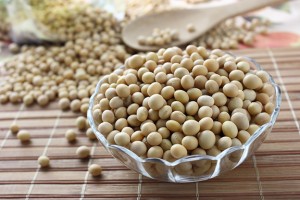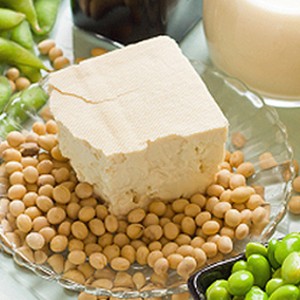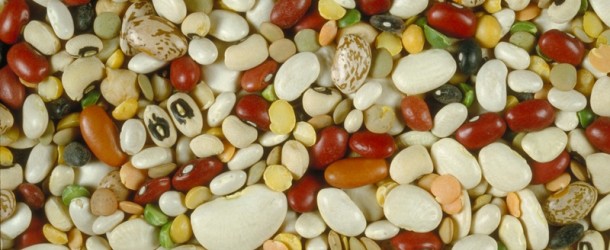 The one question that herbivores get asked more than anything else is “Where do you get your protein?” It usually comes right after “You haven’t eaten any of the bacon or eggs. Are you vegan?” I’ve been eating this way for so long, that I’m actually kind of tired of the word “protein”. In fact, the last time someone asked me about it, I laughed at him because I thought he was joking. He wasn’t. He seemed to have a genuine concern for my nutrient intake.
The one question that herbivores get asked more than anything else is “Where do you get your protein?” It usually comes right after “You haven’t eaten any of the bacon or eggs. Are you vegan?” I’ve been eating this way for so long, that I’m actually kind of tired of the word “protein”. In fact, the last time someone asked me about it, I laughed at him because I thought he was joking. He wasn’t. He seemed to have a genuine concern for my nutrient intake.
We’re a protein-obsessed culture. There are protein bars, protein shakes, protein powders, protein packed salads, high protein bread, protein covered protein – the list goes on and on. I’m not really sure how this preoccupation with protein started, or where the idea that it can only be found in meat products came from. The truth is that protein can be found in almost all foods, and those on meat-free diets don’t really have any problems with obtaining it. Protein deficiency is not a problem that’s commonly found in countries where food is abundant, and it’s not something that Americans really need to put any effort into eradicating.
What exactly is protein? Protein is a macronutrient, and the body needs it to build, repair and maintain tissue. Protein is made up of amino acids. There are 20 amino acids, and the body can synthesize 12 of them on it’s own, so we need to get the other 8 from food. A “complete protein” is a food that contains all 8 essential aminos and an “incomplete protein” is one that doesn’t. It used to be believed that we needed to eat all 8 amino acids together in order for them to be useful, but that was proven to be untrue many years ago. The body’s a smart machine and it knows what to do with each amino acid when it gets it.
 So where do I get my protein? The question should problem by more like “Where don’t I get my protein?” Protein is found in almost every plant food under the sun. Soy foods such as tofu, tempeh, and soy beans themselves are very high in protein, as are beans such as lentils, pinto beans and black beans. Whole grains are also very high in protein, and quinoa contains all 8 essential amino acids. Nuts and seeds are also chock-full of protein. Hemp seeds are a complete protein, and they taste great sprinkled on top of a salad or mixed into your morning oatmeal. (And no, you won’t get a buzz from eating them.) Seitan, which is a wheat-meat, is also packed with protein, with about 24 grams in each serving.
So where do I get my protein? The question should problem by more like “Where don’t I get my protein?” Protein is found in almost every plant food under the sun. Soy foods such as tofu, tempeh, and soy beans themselves are very high in protein, as are beans such as lentils, pinto beans and black beans. Whole grains are also very high in protein, and quinoa contains all 8 essential amino acids. Nuts and seeds are also chock-full of protein. Hemp seeds are a complete protein, and they taste great sprinkled on top of a salad or mixed into your morning oatmeal. (And no, you won’t get a buzz from eating them.) Seitan, which is a wheat-meat, is also packed with protein, with about 24 grams in each serving.
Okay, so beans, grains and nuts are great, but what about vegetables? Contrary to what you might think, most vegetables are also packed with protein. 1 cup of broccoli has about 6 grams of protein. (That might not sound like a lot, but chances are that you think you need more protein than you actually do.) A cup of spinach also has 6 grams. Most green vegetables contain a lot of protein. In fact, asparagus is so high in the amino acid aspargine, that the amino was named after the plant. Even fruit contains protein! I cup of blackberries has about 2 grams, and a banana has about a gram and a half.
So just how much protein do we need? Well, the average person is probably eating a lot more than necessary. To find out how much you need, multiply your body weight by .4. The number you get is the amount of protein you need in grams. Athletes and women who are pregnant or nursing will need a little more than that. I kept track of my protein intake for a little while because of the culture’s obsession with it, and I found that I get about 20 grams more than what I need a day.x
I would love to think that this is the last time I have to answer the question “Where do you get your protein?” but sadly, I’m sure it’s not.

Great article, thank you!